Steps of Perfection (part 1)
/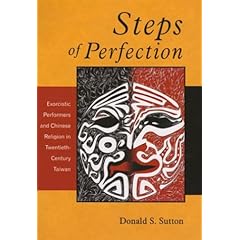 Before our former vice president invented the internet I had a habit of reading thick scholarly books. Now, I have to go hide out in the mountains for a few days or feign illness if I want to get through something really erudite.
Before our former vice president invented the internet I had a habit of reading thick scholarly books. Now, I have to go hide out in the mountains for a few days or feign illness if I want to get through something really erudite.While I love these books they are the opposite of juicy. That being said, if you have the discipline or isolation to really read a book, Steps of Perfection: Exorcistic Performers and Chinese Religion in Twentieth-Century Taiwan
This book falls in the the category of books which are so scholarly they hint at the juicy ground breaking ideas rather than say them outright. With a book like this you have to read the footnotes or you might miss the best part of the argument.
The book is about a type of Chinese martial dance called Jiajiang which runs roughshod over all Western categories of conceptualization to such an extent that it takes a whole book just to say what the dance is. Sutton took a lot of video in 1993 while researching this book, and I would give one of my best swords to see the best of that tape. The book should have a DVD, but I guess the author didn't have proper releases or something (he hasn't answered my emails on this question so I don't know.)
(Here is a google video search for Jiajiang, someone with better Chinese language skills can probably find some better stuff, wink, wink? )
The scope of this book appears on the face of it to be narrow, but the implications of the book for conceptualizing Chinese martial arts, medicine and religion are huge. I'm going to spend a few days talking about this book so let me spin off for a minute to get you oriented.
The long history of the survival of various civilizations could be viewed as the project of getting nice people to fight. There are now and there have always been, humans who love killing. The duty of the civilized and the free is to see to it that people who love killing do not get into positions of power; and that in the event that such people do get into positions of power, they get taken out.
How that happens in each and every civilization or era is different. Historically in China there were several layers of organized armed groups which shared the duty of keeping power civil: Standing armies, militias, small professional forces maintained by a magistrate, and local family protection societies.
How do you get people to support the common good in an environment in which there are competing interests. Part of what this book deals with is how people are connected through ritual, and how various needs of the different layers of society find their way into ritual expression. Yikes that's a mouthful.
The jiajiang martial dancers share some of the important roots of modern martial arts. Sutton maps a spacial environment in which different ways of organizing reality overlap and interact.
In one corner you have Daoist ritual which is done in private. Orthodox Daoists by definition do not subordinate to deities. They perform rituals with cosmological forces that go unseen by the general public, but exist in peoples' imaginations. People know about them, even if they don't see them. Daoists are part of a bigger landscape of ritual relationships, and they represent a particular approach to life.
In another corner are the representatives of a government which has its own rituals. Historically, for instance, magistrates would arrive in an area with a sedan chair and an entourage, sometimes huge processions demonstrating real power.
In another corner there are the trance-mediums who publicly speak for and with the gods, controlling and healing people with other worldly powers, spells, and self-mortification.
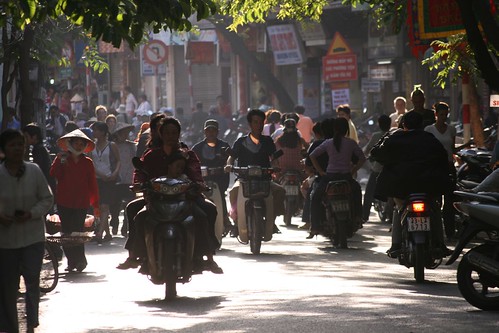 Then there is the corner of medicine and elite scholarly exchange which merges in to the much larger realm of commerce.
Then there is the corner of medicine and elite scholarly exchange which merges in to the much larger realm of commerce.And then there is the popular realm where local elites interact with the guy who drives the gravel truck. Where martial artists train and perform gongfu, where school kids learn martial dance routines for a two day festival procession that twists around visiting local temples and homes. Where the presence of the dead is felt in places people frequent and exorcism is a regular occurrence. A place where gods and demons possess not just mediums, but the guy you went to high school with.
The fighting dream dances of Taijiquan and Baguazhang came out of this world, and like everything else that grew up in Chinese society, these arts have a limb in each corner.

 George Xu used to tell us stories about the Wild East. Often he was a character in these stories, and honestly I think they were true stories, but more often than not he seemed to be the cowboy with the white hat. (He was the good guy in morality tales that may or may not have been so black and white.)
George Xu used to tell us stories about the Wild East. Often he was a character in these stories, and honestly I think they were true stories, but more often than not he seemed to be the cowboy with the white hat. (He was the good guy in morality tales that may or may not have been so black and white.)
 One of the basic ideas of Systems Theory is that if you have a complex system and you speed up one part of that system, you will slow down the whole system.
One of the basic ideas of Systems Theory is that if you have a complex system and you speed up one part of that system, you will slow down the whole system.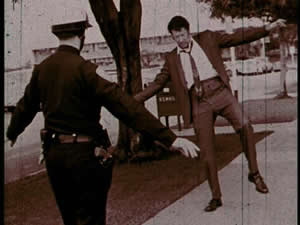 To feel your body or not to feel your body, that is the question.
To feel your body or not to feel your body, that is the question. Traditionally strange feelings and disembodied feelings were covered under the subject: trance and possession. Now we have the scientific categories of proprioception and kinesthetic awareness.
Traditionally strange feelings and disembodied feelings were covered under the subject: trance and possession. Now we have the scientific categories of proprioception and kinesthetic awareness. The concept of Shen has so many meanings in Chinese that it probably deserves a whole book. The shen I'm talking about here is the one that is most often translated "spirit" and is the lighter more expansive aspect of qi. (I'm not going to attempt a comprehensive definition.)
The concept of Shen has so many meanings in Chinese that it probably deserves a whole book. The shen I'm talking about here is the one that is most often translated "spirit" and is the lighter more expansive aspect of qi. (I'm not going to attempt a comprehensive definition.) I believe that hormones have a big effect on shen. How many of us have known a slender woman who once a month asks if we think she is fat? The first time this happens we laugh and say, "Yeah your a regular hippo." The second time this happens we say, "No, honey, of course not," only to be accused of being patronizing or worse. No doubt most of us have learned, through trial and error, that a failure to respond will be received as "ignoring," and that the best response is an audible but non-verbal response:
I believe that hormones have a big effect on shen. How many of us have known a slender woman who once a month asks if we think she is fat? The first time this happens we laugh and say, "Yeah your a regular hippo." The second time this happens we say, "No, honey, of course not," only to be accused of being patronizing or worse. No doubt most of us have learned, through trial and error, that a failure to respond will be received as "ignoring," and that the best response is an audible but non-verbal response: I want to announce that we have officially entered the Era of Conditioning.
I want to announce that we have officially entered the Era of Conditioning. I'm anti-conditioning. I believe in doing things form the inside out. If I said, "I believe in beginning from the heart," you could accuse me of being a silly romantic. But it's not because I want to bring out genius, or preserve mystery, I just prefer spontaneous unconditioned responses.
I'm anti-conditioning. I believe in doing things form the inside out. If I said, "I believe in beginning from the heart," you could accuse me of being a silly romantic. But it's not because I want to bring out genius, or preserve mystery, I just prefer spontaneous unconditioned responses.
 Not long ago I read somewhere that Martial Artists are left handed way out of proportion to their presence in the general society. At the time my morning class was 70% lefties.
Not long ago I read somewhere that Martial Artists are left handed way out of proportion to their presence in the general society. At the time my morning class was 70% lefties. Is this because us lefties have some advantage in fighting? Or do we
Is this because us lefties have some advantage in fighting? Or do we just have more inner torment because deep down, we know we don't belong? In Italian left hand is "mano sinistra", the sinister hand.
just have more inner torment because deep down, we know we don't belong? In Italian left hand is "mano sinistra", the sinister hand. The problem is doubled for lefties with long legs. Not that I ever
The problem is doubled for lefties with long legs. Not that I ever accepted my victim hood; I refused to sit in these types of chairs in high school. If the classroom had them I brought along a foam backpackers mat and sat on it against the wall in the back of class.
accepted my victim hood; I refused to sit in these types of chairs in high school. If the classroom had them I brought along a foam backpackers mat and sat on it against the wall in the back of class. I stopped at a gas station in the middle of nowhere on the way to the mountains last month. I checked the oil and it was pretty low so I bought a couple of quarts. I worked in a gas station when I was 14 so I know some tricks for getting a good grip, but my engine was really hot and the oil cap wouldn't budge. I went looking around in my trunk for someway to get more leverage and came up empty. I felt my manhood was being challenged. Just then a thick stocky man, about 6 inches shorter than me said, "Can I give you a hand." I'm sure I looked embarrassed but then I looked at his hands and they were clearly twice the size of mine, his fingers were as thick as cigars. "Sure, uhh...thanks" I said, and he unscrewed it. I asked where he got such huge hands and he said it was his Scottish ancestry.
I stopped at a gas station in the middle of nowhere on the way to the mountains last month. I checked the oil and it was pretty low so I bought a couple of quarts. I worked in a gas station when I was 14 so I know some tricks for getting a good grip, but my engine was really hot and the oil cap wouldn't budge. I went looking around in my trunk for someway to get more leverage and came up empty. I felt my manhood was being challenged. Just then a thick stocky man, about 6 inches shorter than me said, "Can I give you a hand." I'm sure I looked embarrassed but then I looked at his hands and they were clearly twice the size of mine, his fingers were as thick as cigars. "Sure, uhh...thanks" I said, and he unscrewed it. I asked where he got such huge hands and he said it was his Scottish ancestry.


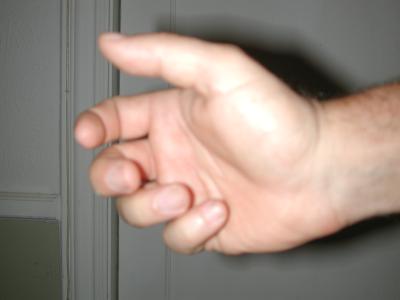 hand doesn't usually close.
hand doesn't usually close.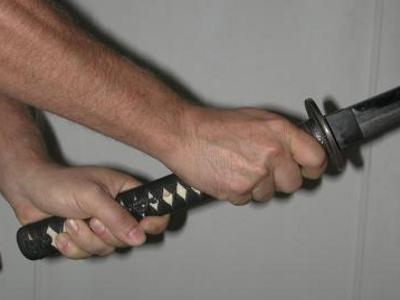 is painful to hold a solid, tightly packed fist for five minutes unless your technique is good. If it hurts, it is wrong (the spirits have left the body.)
is painful to hold a solid, tightly packed fist for five minutes unless your technique is good. If it hurts, it is wrong (the spirits have left the body.)